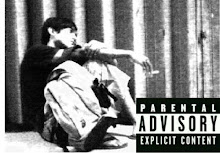Beginning on Tuesday, Berlin-based Flying Steps, four-time world champions in breakdance, perform to works from Johann Sebastian Bach's "Das Wohltemperierte Klavier" ("The Well-Tempered Clavier") for 12 nights.
"Flying Bach" is billed as "hip-hop philosophy meets classical genius" and a "Bach battle in 12 rounds."
The composer's preludes and fugues are played either on piano and harpsichord, or given an electronic makeover, pumped through speakers at Berlin’s modern art museum, the Neue Nationalgalerie.
As the group's founder Vartan Bassil explains, the six dancers of Flying Steps mix up breakdancing with so many different high-energy styles that it can look like something completely new.
"It is a huge challenge to perform to classical music. With hip-hop we move in time with the beats. But with Bach we also have to transform quieter noises into movement, and mirror the feel of the music with our dancing.
"In breakdance, technique and acrobatics take centre stage, the combination of individual moves. But for 'Flying Bach' we wanted the emotion of the music to come across."
Joining Flying Steps' Vartan, Benny, Mikel, Lil Ceng, KC-1 and Lil Rock on stage is Japanese contemporary dance artist Yui Kawaguchi, the show's only female dancer.
Video artist Marco Moo meanwhile beams live visuals on the walls, onto the museum's huge windows behind the performance and at one point onto a white sheet held up by the dancers on stage.
For the project, Flying Steps teamed up with German director Christoph Hagel, who is no stranger to giving classical music a modern makeover having previously staged Mozart operas in a power station and in a metro station.
"My job was to explain the music, to make the dancers understand how artfully and refined Bach composed his music. But I stayed out of the choreography," he said.
The result was a new experience, and Hagel says he was amazed by how well breakdance lends itself to Bach, better than classical ballet, for example. He also thinks traditionalists could learn a thing or two from the group.
"Flying Steps have such an unpretentious way of listening to and interpreting music ... I am amazed by their energy and directness - it's not something I know from the high-minded world of high culture," Hagel said.
"We want to show that Bach is high-energy music and that hip-hop can be great art."
"Flying Bach" runs until May 1.
AFP (news@thelocal.de)


